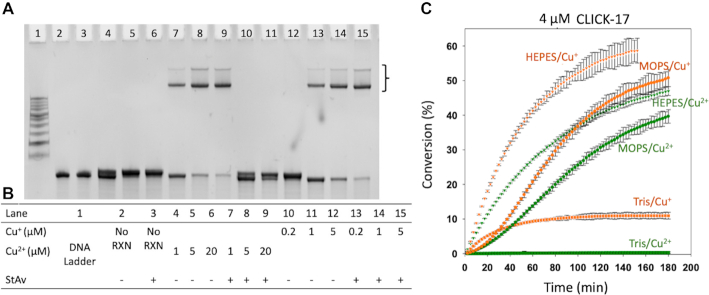Figure 8.
Investigation of Cu2+-induced alkyne homocoupling and the role of buffer components in the generation of Cu+ for CuAAC by CLICK-17 and ≡-CLICK-17. (A) Investigation of alkyne homocoupling using the in cis reaction of ≡-CLICK-17 with azide-biotin. The bracket indicates streptavidin-shifted bands of biotinylated ≡-CLICK-17. The DNA band running just above the unreacted ≡-CLICK-17 represents the triazole product formed between ≡-CLICK-17 and azide-streptavidin. However, no additional DNA band corresponding to a CLICK-17-≡-≡-CLICK-17 product can be seen in any of the lanes. (B) Table of reagents used for the data shown in (A). (C) Investigation of the effectiveness of different buffering agents in promoting the in trans catalysis of conjugation between hexynol and azide-coumarin, catalyzed by CLICK-17, in the presence of either Cu+ or Cu2+. The error bars represent one standard deviation from the mean obtained from three independent experiments.

